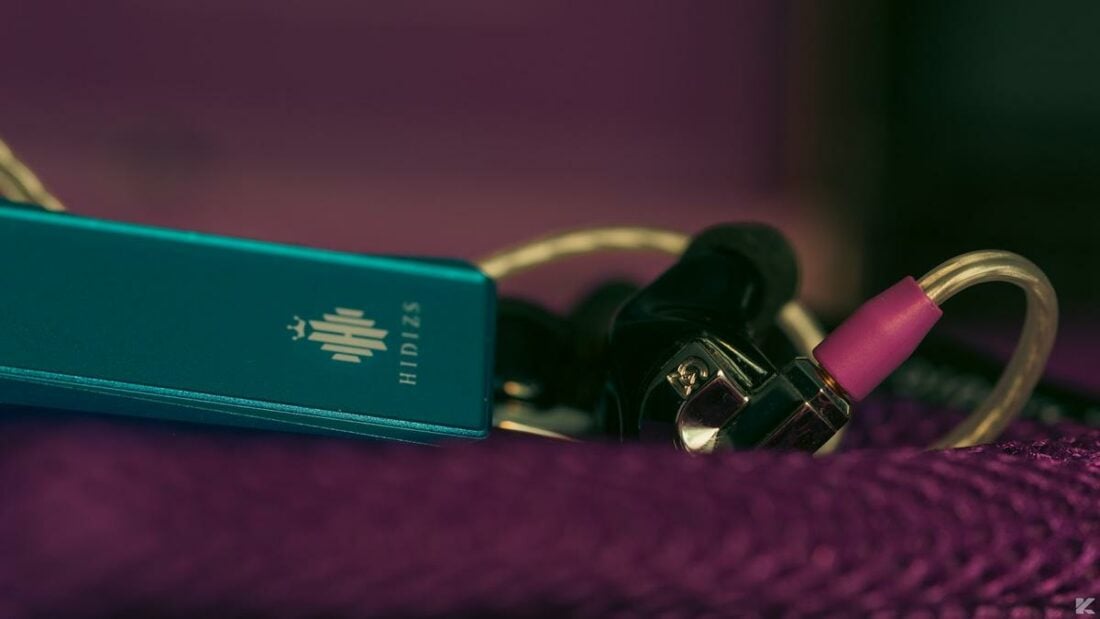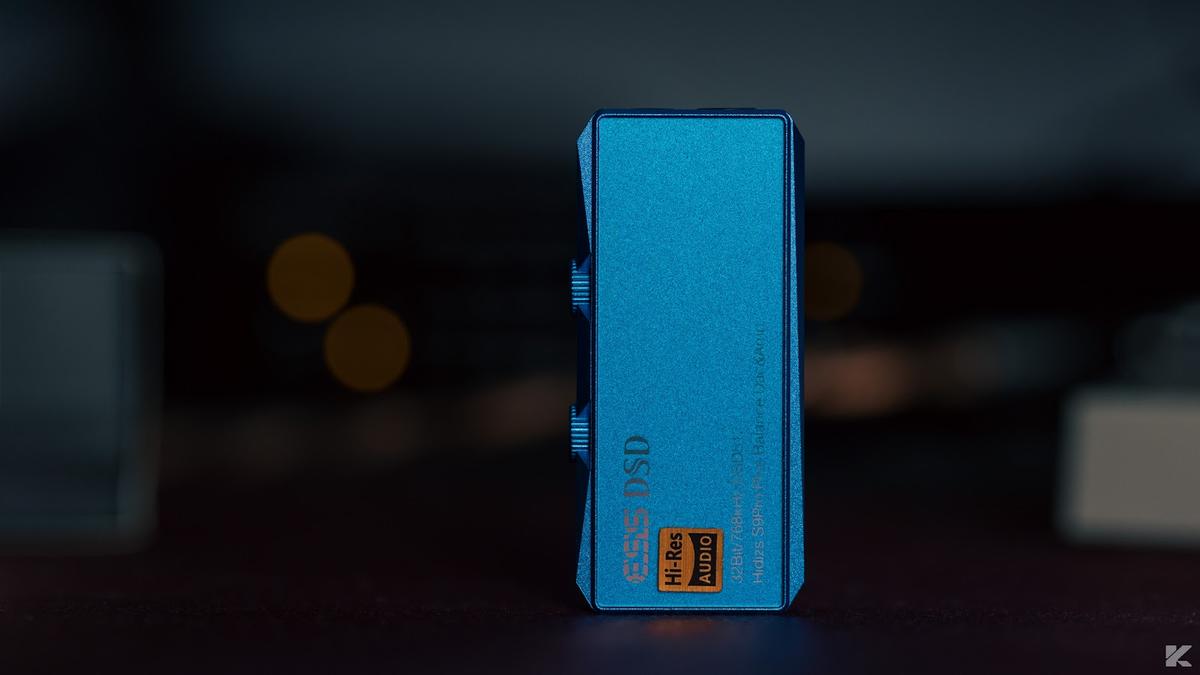Hidizs’ latest midrange dongle adds volume controls and a 4.4mm balanced output, but the competition is tougher than ever.
- Unique design and hardware volume controls
- Above average driving power from balanced output
- Selectable filters
- Low noise floor
- Moderate power draw
- Wobbly buttons
- No app support
- Power output falls short of class leaders
It’s been over a year since the release of the Hidizs S9 Pro, so it was high time for Hidizs to release a successor.
Enter the S9 Pro Plus, the latest dongle from Hidizs that neatly fills that gap for a “revision.” The older S9 Pro gets a decent price cut, and the even older S9 gets discontinued. So you get last year’s higher priced model for cheap, while those looking for the latest and the greatest have to spend a bit more.
Fair enough, I guess, but are the upgrades worth the extra bucks, or is it wiser to go for the cheaper, older model? Let’s find out.

Unboxing and First Impression
Design and Build
The S9 Pro Plus goes for an aluminum and glass build, with glass on the top and bottom of the device. The design language is similar to Hidizs DAPs with the angular shape and sharp corners.

A new addition is the volume buttons, which also aid in switching between filters. An RGB LED is hidden underneath the Hidizs logo to indicate the sample rate and selected filter.
The button wobble is an issue for me.

Finally, there are the ports. The type-C port is on one end of the S9 Pro Plus, while the other end houses the 3.5mm single-ended and 4.4mm balanced ports. The 4.4mm port is another change from the S9 Pro, which has a (less common) 2.5mm port.
Different color options are available, but I think the blue finish is the most dazzling. Overall, the build is excellent, and the distinct “Hidizs” design is another plus.
Handling
At 55×25×11mm and 17g, the Hidizs S9 Pro Plus is very easy to carry around in my pocket. It also does not get noticeably warm during operation – so brownie points for that.
Power consumption
Even when using the balanced output, the power consumption is not out of the ordinary for a dongle of this class. Hidizs has properly optimized the Sabre chipset.
Controls
The two buttons are the only controls available on the S9 Pro Plus. During playback, they act as volume buttons. When the playback is stopped, simultaneously pressing both buttons changes between the available filters. The filters are as follows:
- Fast roll-off
- Linear-phase fast roll-off
- Minimum phase fast roll-off
- Slow roll-off
- Linear-phase slow roll-off
- Hybrid fast roll-off

App
Unfortunately, no app is available for the Hidizs S9 Pro Plus, so further customization is out of the equation.
Under the Hood
The Hidizs S9 Pro Plus utilizes an ESS Sabre ES9038Q2M chipset. This DAC chip is inherently balanced (with two differential DAC chips, one per channel), so it is a popular choice for manufacturers due to its relatively straightforward implementation.
The amp section is not explained in the spec sheet of the S9 Pro Plus. We only get to know the output power for a 32 ohm load (138mW SE, 180mW balanced), and that’s about it.
How Does the Hidizs S9 Pro Plus Sound?
Ideally, sources should be “transparent,” with no inherent coloration. Reality is far from perfection, though, so you’ll find that some sources can lean a bit warm while others may sound brighter.
The Hidizs S9 Pro Plus is mostly neutral in tone, with a slight hint of warmth, courtesy of rounded bass notes.

In terms of amplification ability, the majority of the IEMs are easily driven. Only when it comes to very tricky loads the S9 Pro Plus falters. For example, the Final E5000 (92 dB/mW @14 ohms, with lower sensitivity in the bass region) or the Tin P1 Plus (highly inefficient magnet array).
On the other end of the spectrum, with very low impedance and high sensitivity IEMs, such as the Campfire Audio Holocene (5 ohm impedance), background hiss is magnified if you push the volume up without music playing.
The prime problem, however, is the reduction of overall dynamic range, as the noise floor eats into the “quietest passages” of the music. For me, it was mostly a non-issue, as even the Holocene are well within the realm of “tolerable” in terms of background hiss.
Lastly, I paired the S9 Pro Plus with high impedance loads (>150ohm) and planar magnetic headphones/IEMs. Planar magnetic drivers usually prefer high current, while high impedance dynamic drivers require high voltage swing.
There are better choices than the S9 Pro Plus for headphones like the Sennheiser HD 800S. The bass sounds noticeably less full, and lower mids are thinned out as a result. The Sennheiser HD 660S2 show similarly toned-down bass but do not suffer the midrange hollowness as much due to their elevated low end.
As for the planar devices, the Campfire Supermoon are driven well with adequate dynamics, while the Hifiman HE400se are not as punchy in the bass as on higher-powered desktop sources. The notorious Hifiman HE6se V2 (82 dB/mW @50ohm) are even less favorable in this regard, sounding lifeless and barely getting loud with the S9 Pro Plus maxed out.
So overall, if I have to summarize the amplification prowess of the S9 Pro Plus, it will be as follows:
- Low impedance (16-150ohms) and high sensitivity (>95dB/mW) loads are well driven.
- Very low impedance (<15ohms) and low sensitivity (<95dB/mW) loads are not ideally driven.
- High impedance and high sensitivity loads are moderately well driven.
- High impedance and very low sensitivity loads are a no-go.
Comparisons
Vs Moondrop Dawn 4.4
The Moondrop Dawn 4.4 is priced similarly but has some distinct differences.
Firstly, the Dawn 4.4 has a fixed type-C cable. Secondly, there are no hardware buttons to control volume, etc. Finally, there is only one output (4.4mm balanced), so you’ll need a balanced cable for any headphones or IEMs you wish to power.
For all these omissions, what you get in return is class-leading output power and app support. The noise floor is also lower than the S9 Pro Plus.
Depending on the end-user’s needs, either of these dongles in the USD$50-$100 price range are great options. If you need absolute performance, the Dawn 4.4 is the ideal choice. The Hidizs S9 Pro Plus is the better option for those requiring more flexibility.
Vs Hidizs S9 Pro
The predecessor to the S9 Pro Plus is now available at a good discount from its original MSRP. In terms of paper specs, the S9 Pro is very similar. The DAC chip is the same; it also has a balanced out, and the output power is even higher (200mW @32ohm) on the older version.
So, is the latest revision an “upgrade”?
Well, there are other factors to dongles than just raw output power. The overall distortion figures are lower on the S9 Pro Plus, thermal management is noticeably better (the S9 Pro tends to get warm rather quickly), and the hardware controls and 4.4mm jack are welcome additions.
And then there is the sound. Those believing in measurements alone may scoff at this, but the S9 Pro Plus has less glare in the upper-midrange and lower-treble region, resulting in a more palatable signature over the previous version.
If you are after raw numbers alone, then the S9 Pro is the logical purchase. The S9 Pro Plus caters to those who prefer a less clinical tone and value the 4.4mm port and buttons.
Where to Buy
Who Should Buy This?
Those looking for a lightweight, power-efficient, and well-measuring dongle that can power most IEMs out there, and a few headphones as well.
Final Thoughts
The Hidizs S9 Pro Plus is an overall upgrade over the last model.
That much is certain.
What’s not so immediately evident is the competition from the likes of Moondrop. The Dawn 4.4 measures just as well, while offering better output power and app support. The S9 Pro Plus has more usability perks, but the slightly weaker amp section holds it back.
That being said, the S9 Pro Plus is solid all around. Barring the wobbly volume buttons, everything worked as expected during my review period. It’s not too expensive, is well-built, and sounds good without being boring or sterile.
I wish the S9 Pro Plus stood above the rest in more aspects, but sometimes, simplicity is all you need, and this particular dongle nails that role.
What’s in the Box?
- Hidizs S9 Pro Plus dongle
- USB type-C to type-C cable
- USB type-A to type-C cable
- Hi-Res stickers
Technical Specifications
- Form: Portable DAC/amp, dongle
- Chipset: ESS Sabre ES9038Q2M
- THD+N%: 0.0019% @32ohms (3.5mm), 0.0008 % @32ohms (4.4mm)
- Channel Separation: 75dB @ 32ohms (3.5mm), 115dB @32 ohms (4.4mm)
- Frequency Response: 20 Hz – 40 kHz
- Removable Cable: Y
- Outputs: 3.5mm, 4.4mm
- Output power: 138mW (single-ended), 180mW (balanced)
- Mic: N
- Dimensions: 55×25×11mm
- Weight (g): 17g
